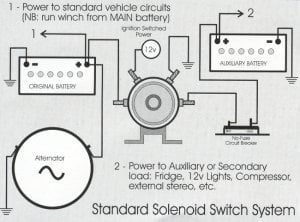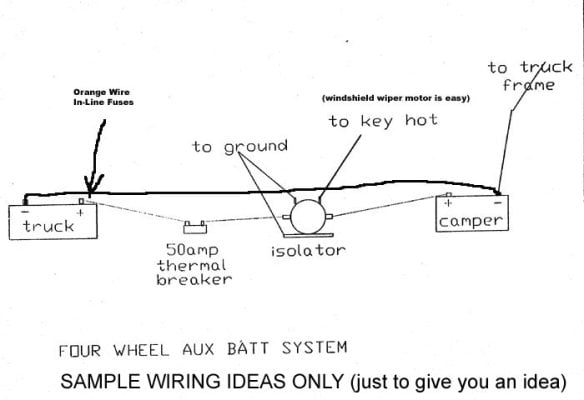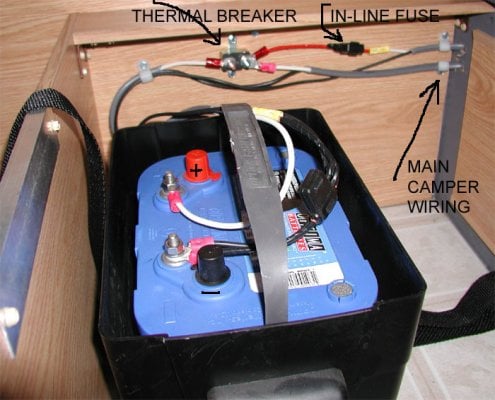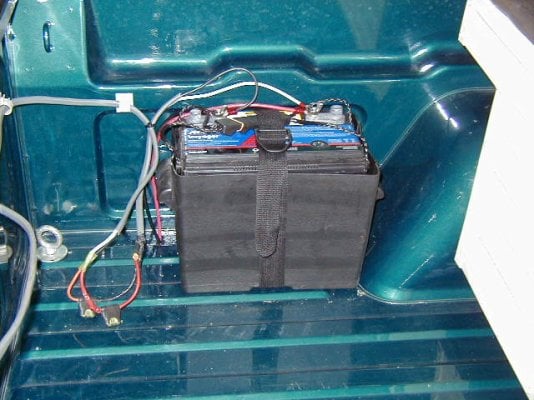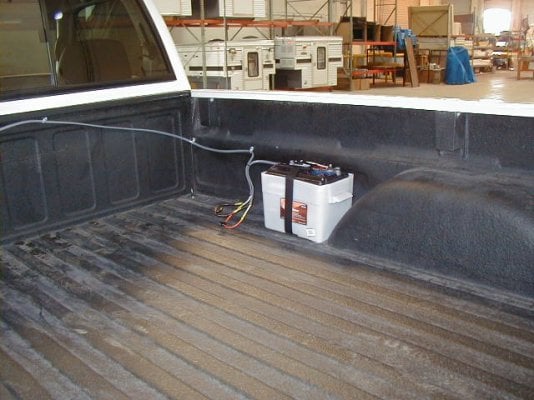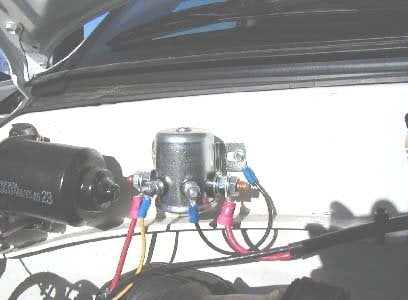OutbacKamper
Senior Member
I still have all the hook-ups in my truck that were installed by 4Wheel Campers in 2004. The 4 eye bolts are now going to be used as tiedowns for my new (to me) Northern Lite camper (weight = 350KG, about 770lb) . My question is about the wiring:
I tried to get professional help for this but everyone is so busy that it would be almost the end of August before it would get done. So I am trying to do the job myself. I am going to reuse the electrical plug installed in the truck bed (I had to try several marine stores before I found one that can order me a new Marinco male plug). How do I wire the battery to the plug? I managed to succesfully hook a new battery up to the camper to run the fridge and lights, etc, but am not sure about how the wiring needs to be run from the truck charging system to the new camper battery (the battery is in the bed of the truck, as there is no room for one in the camper). I seem to remember that there was some type of battery isolator in the camper near the battery. If anyone can show me a picture of their stock battery, isolator and wiring, I would be very greatful.
My goal is to take my daughter camping in the new camper next weekend, so I am feeling a bit rushed, trying to sort this out.
Thanks
Mark
I tried to get professional help for this but everyone is so busy that it would be almost the end of August before it would get done. So I am trying to do the job myself. I am going to reuse the electrical plug installed in the truck bed (I had to try several marine stores before I found one that can order me a new Marinco male plug). How do I wire the battery to the plug? I managed to succesfully hook a new battery up to the camper to run the fridge and lights, etc, but am not sure about how the wiring needs to be run from the truck charging system to the new camper battery (the battery is in the bed of the truck, as there is no room for one in the camper). I seem to remember that there was some type of battery isolator in the camper near the battery. If anyone can show me a picture of their stock battery, isolator and wiring, I would be very greatful.
My goal is to take my daughter camping in the new camper next weekend, so I am feeling a bit rushed, trying to sort this out.
Thanks
Mark

